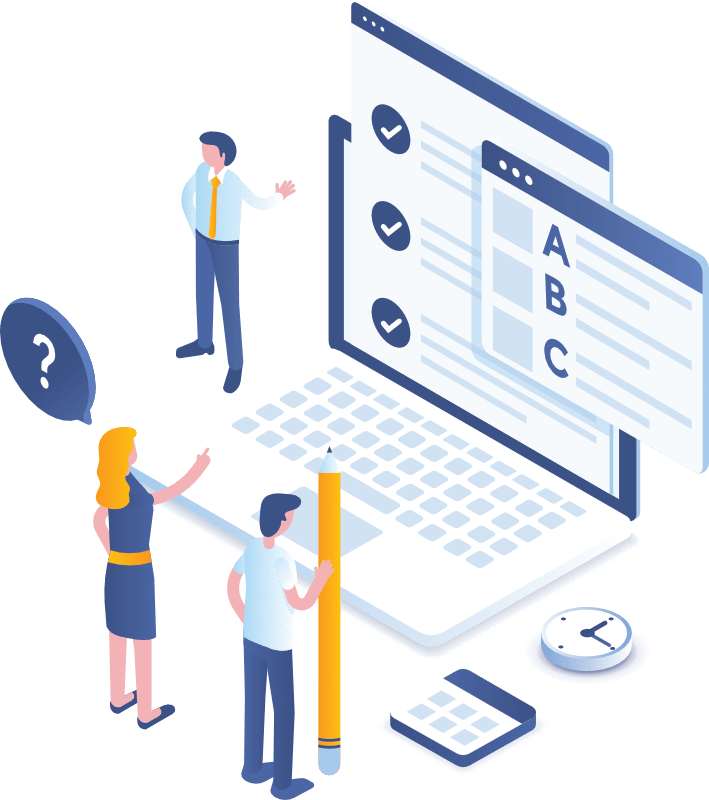Website Design: The Ultimate Guide
In this digital age, your website is your brand’s shop window, and will typically give a new contact their very first impression of your business. This has made effective website design more crucial than ever.
But great design is not just about the way your website looks, although of course that is an important part of it; as well as visual appeal, web design encompasses functionality and user engagement. A well-designed website will attract visitors and encourage them to stay and return, convey your brand message and drive conversions, ultimately contributing to your business’s overall success.
According to Uswitch, as of October last year, more than 90% of UK mobile users had a smartphone, and their use is growing all the time. So mobile-responsive design has never been more essential. Websites must adapt seamlessly to different screen sizes and resolutions to provide a consistent user experience.
This guide explores the key principles and practices which will help you create attractive, functional and user-friendly websites.

Why does website design matter?
Website design is all about a website’s layout, mapping, user interface and its overall look. It combines colour schemes, typography and imagery to create an engaging yet functional online presence. Effective website design doesn’t just make a site visually appealing – it also ensures it's user-friendly and consistent with the brand's identity.
First impressions
Users form opinions about your website within seconds of landing on it. An unappealing or outdated site will send visitors away to look at competitor sites almost instantly. People also judge your customer service and how you will treat them from the first glance at your pages.
Brand identity
Your website design reflects your brand's personality and values and how your audience perceives your brand and whether or not they can trust it.
User experience
Good design enhances usability and keeps visitors engaged.
Conversion rates
A well-designed website significantly improves conversion rates. (This refers to the percentage of your visitors who take a desired action, whether that’s clicking a button, signing up for a newsletter or buying something.)
SEO
Search engines prefer well-designed, user-friendly websites, and so you will rise up through the results pages with the likes of Google.
Your competition
Your competitors are also designing their websites. So you need to be doing the same.
Key features of website design
User Experience (UX)
Focuses on creating intuitive and seamless interactions for users.
Visual design
Involves aesthetics such as colour schemes, typography and imagery to enhance brand identity.
Responsive design
Ensures optimal functionality across devices (desktops, tablets, smartphones) with flexible layouts.
Navigation
Provides a clear structure with menus, breadcrumbs (the secondary navigation tool that helps users understand their location on a website and navigate to related content) and search bars for easy access to the information the visitor to your site is looking for. Complicated navigation often deters users from exploring a website further.
Content
High-quality, organised content that is both engaging and easy to read improves user retention and SEO, from pages to blogs, case studies, reviews, social media and more.
Loading speed
Fast loading times are crucial for reducing bounce rates; techniques for this include image optimisation and code minification – the process of removing unnecessary characters from code and mark-up in web pages and script files.
Accessibility
Designs need to accommodate the needs of all users, including those with disabilities, through proper alt text and keyboard navigation. The Equality Act of 2010 states that all UK service providers should consider ‘reasonable adjustments’ for those with disabilities and that this includes website accessibility. What’s more, the UK’s Federation of Small Businesses reports that 86% of users with access needs would spend more if there were fewer barriers to browsing websites. So think about how you can accommodate visitors with a variety of different needs, from dyslexia to visual impairment, autism or deafness.
Call-to-Action (CTA) Buttons
Have strategically placed buttons which guide users towards the actions you want them to take, using distinct visuals and action-oriented language. A lack of clear calls to action can result in missed opportunities for engagement or conversion.
Branding
Consistent branding elements (logos, colours, typography) to reinforce identity and build trust.
White space
Effective use of empty space improves readability and makes key information stand out.
Interactivity
Engaging features such as animations and videos enhance the user experience when used properly.
Search Engine Optimisation (SEO)
Designing with SEO in mind from the outset improves visibility in the search results – so you need an optimised content structure. Talk to your SEO agency about this.
Analytics integration
Tools for tracking user behaviour and performance will inform design improvements.
Security features
Measures such as SSL certificates – digital certificates authenticating a website's identity and enabling an encrypted connection – protect user data and enhance trustworthiness.
Testing and iteration
Continuous testing identifies areas for improvement based on user feedback and performance metrics.
These features combine to create a successful website which attracts visitors, encourages them to stay and provides a positive user experience.
What are the best practices for website design?

When designing a website, it’s essential to keep the layout simple and clean to enhance the user experience.
Consistency across all pages helps reinforce brand identity and ensures that users can navigate seamlessly from one page to another.
Using high-quality, relevant images enhances visual appeal and engagement, while implementing clear calls to action guides users towards the actions you want them to take.
Additionally, making navigation intuitive and easy allows visitors to find the information they need quickly.
Mistakes to avoid with website design

When designing a website, it's important to understand the common mistakes which can diminish its effectiveness. One major (and common) pitfall is having a cluttered layout, which can overwhelm visitors and make it difficult for them to find the information they need. Additionally, poor colour contrast can have a negative impact on readability and the user experience.
Inconsistent branding across pages can confuse users and weaken your brand identity, while slow loading times lead to high bounce rates. (Bounce rate refers to the percentage of visitors who go to your website and then leave after viewing one page rather than leaving to visit other pages. As a general rule, anywhere between 40% and 55% is considered a ‘good’ bounce rate.)
Finally, overlooking the basics of SEO can limit the website's visibility in the search engine results, preventing potential customers from discovering your site. By avoiding these mistakes, you create a more effective, user-friendly website.
Why are speed and performance so important when it comes to website design?

Speed and performance are critical components of website design since they significantly impact user experience and engagement. Search engines like Google prioritise fast-loading sites in their rankings, meaning that improved speed can enhance visibility and drive more traffic.
Ultimately, optimising speed not only boosts user satisfaction but also increases conversion rates, making it essential to the success of any website.
Understanding User Experience (UX)

User Experience (UX) refers to a user’s overall interactions with a product or service, particularly in digital environments such as websites and applications. It includes aspects such as visual design, navigation, functionality and content, all of which can make online interactions intuitive and enjoyable, enhancing user satisfaction and loyalty.
Good design from a UX point of view is vital because it shapes users' perceptions of a brand; a positive experience builds trust and encourages repeat visits. Effective UX also boosts conversion rates, since users are more likely to complete the actions you want them to take when the process is seamless.
In contrast, poor UX frustrates users, leading them to abandon a site for competitors. As businesses recognise the importance of investing in UX, prioritising it becomes essential for long-term success in the competitive digital landscape.
Should you seek professional website designers or do it yourself?

Whether you hire a professional website designer or decide to create your website yourself depends on your budget, time, technical skills and business goals.
DIY builders are cost-effective and quick to set up, but may offer limited customisation and scalability, making it hard to make your website truly your own or for it to grow as your business does.
If you decide to get a professional designer to provide tailored solutions optimised for UX and SEO, this can save you time and ensure a polished appearance.
Ultimately, if you need a simple site on a tight budget, DIY may work, but for established businesses seeking growth and a standout online presence, investing in professional design is often the better option and will pay dividends in the long run.
Getting your website design right

At SWSweb, we specialise in comprehensive website design services tailored to your business’s unique needs. Our team of experienced designers and developers is committed to creating visually appealing, highly functional websites to enhance UX and drive engagement.
We understand that each business has its own identity and goals, which is why we offer customised design solutions. Whether you need a simple informational site or a complex eCommerce platform, our experts will work closely with you to develop a design that reflects your brand personality and values and meets your specific requirements.
Get in touch today and let us know what you need. Give us a call, email us or fill in the simple online form. Alternatively, chat to us online. Whatever you need for your site, we’ll be happy to work with you to enhance your online presence.
10% off if you quote this article
If you've found us through this article, let us know and we'll give you a 10% discount on your website design and build.
